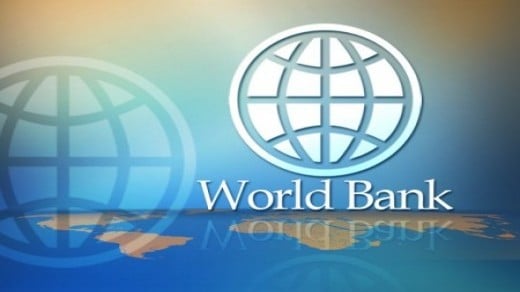
The World Bank has projected that Pakistan would miss one of the core conditions of the International Monetary Fund (IMF) programme about showing a primary budget surplus. It said Pakistan’s economic growth rate would remain at 1.7% but inflation to accelerate to 26.5%.
The Pakistan Development Outlook report –the flagship publication of the Washington based lender –has also shown elevated fiscal and debt risks to the macroeconomic framework.
There would be a primary budget deficit of 0.4% of the Gross Domestic Product by the end of this fiscal year, said Aroub Farooq, a WB economist and author of the report.
Under the short-term $3 billion IMF deal, Pakistan is bound to show a primary budget surplus of 0.4% of the GDP or Rs421 billion. The deficit projection means that Pakistan’s primary budget balance –calculated after excluding the interest payments – would be off by around Rs850 billion.
Today, we have much more information than what the IMF had in July this year at the time of programme approval, said Adnan Ghuman, another WB economist, while responding to a question about the contrast between the IMF target and the WB projection.
He said the actual budget deficit in the last fiscal year was higher than the provisionally assessed figure at the time of the IMF programme.
The report also revealed that Pakistan would also miss the overall budget deficit target of 6.5% of the GDP or Rs6.9 trillion by a wide margin. The WB stated that the overall budget deficit could hit 7.7% of the GDP or Rs8.2 trillion –a slippage of Rs1.3 trillion.
The country will also miss its inflation and economic growth targets by wide margins, showed the report.
Under the current policy framework, Pakistan faces sluggish growth and extremely high macroeconomic risks, even assuming effective implementation of the IMF standby arrangement and a stable political environment.
“With little progress against structural reforms, however, confidence will remain low, growth sluggish, and risks exceptionally high,” read the report.
Even with the completion of the IMF programme, associated bilateral financing inflows, and continued rollovers, reserves are projected to remain low, averaging less than one month of total imports over next two fiscal years.
The type of fiscal adjustments that Pakistan needs for debt and fiscal sustainability does not end in March with the end of the IMF programme, said Najy Benhassine, the WB country director. There is thinking that after the end of the current short-term IMF programme, there will be a new IMF programme, he said.
Given the large amortization payments and limited private inflows, the government will be forced to maintain import controls, constraining the viable pace of economic recovery.
The WB said a weaker currency and high domestic policy rates will increase interest payments.
The short-term macroeconomic stability will depend on the robust implementation of the IMF programme and continued fiscal restraint, said Aroub.
Without further reforms, risks will remain exceptionally high, economic activity will remain constrained by import controls and weak confidence, while low investment will undermine medium-term growth potential.
To a question, Najy said that the disbursement of a $350 million budget support loan would depend upon the macroeconomic conditions.
Last year without budget support, the WB had disbursed $2.1 billion and 40% to 50% of it was due to disbursements to the Benazir Income Support Programme (BISP) beneficiaries and flood related inflows.
“We would not disburse $2.1 billion this year but hope that without budget support $1.5 billion to $1.6 billion can still be disbursed in this fiscal year,” Najy said.
He said on top of that $350 million RISE-II loan can be disbursed but the WB needs to reassess the macroeconomic situation before disbursement of budget support loans. He said all the prior actions for the RISE-II loan have been met by Pakistan.
The lender said the current account deficit is expected to widen to 1.4% of the GDP in this fiscal year.
Inflation
While commenting on inflation, the report stated that inflation will remain high at 26.5%, which is marginally lower than the last fiscal year due to high base impact. The government and the SBP have set the inflation target at 21% for this fiscal year.
The trade deficit would widen and the remittances would be low, which could lead to some import related restrictions. Financing the fiscal deficit through bank borrowing has led to a rapid growth in the monetary base, contributing to inflationary pressures.
GDP growth
Against the government’s target of 3.5%, the WB said Pakistan may have an economic growth rate of just 1.7%. The WB has not accepted the last PML-N government’s claim of 0.3% growth rate in the last fiscal year. Instead it stated that Pakistan’s economy contracted in the last fiscal year.
“Overall, real GDP is estimated to have declined by 0.6% in FY23 after growing by 6.1 percent in FY22.”
Supply chain disruptions due to import restrictions and flood impacts, high fuel and borrowing costs, political uncertainty, and weak demand affected industry and service sector activity, and dampened private investment, it added.
The report underlined that “current economic trajectory is not sustainable without further fiscal adjustment and other reforms”. The foreign exchange position continues to erode, despite the new IMF programme, rollovers, refinancing, and new inflows from official creditors. The persistent exchange rate depreciation and inflationary pressures continue to weigh on economic activity.
As a result, economic growth is expected to remain below potential over the medium term with limited improvements in investment and exports.
With depleted policy buffers, the economy’s capacity to overcome any fresh domestic or external shock remains limited; downside risks to the outlook are therefore very high.
High fiscal deficits were leading to record borrowings. The WB officials said that 70% of the banks’ balance sheet was now invested in the government debt, which was quite a high ratio.
Ironically, as much as 23% of the total banking sector deposits is made up of the government deposits and treasury single account would help saving Rs400 billion to Rs500 billion in annual debt servicing cost.
Poverty
Moritz Meyer, senior economist WB, said amid slowing growth and high inflation, the poverty headcount is estimated to have reached 39.4% in the last fiscal year—more than 5 percentage points higher than preceding year.
The record high food and energy prices, lower labor incomes, and the loss of crops and livestock due to the 2022 floods significantly impacted real household incomes, said Meyer.
Despite a temporary increase in cash transfers and one-time fuel subsidy, overall mitigation measures were insufficient to protect poor and vulnerable households, said the lender.
Households’ real incomes and purchasing power declined in the last fiscal year.
This is particularly true for poor and vulnerable households, which spend roughly half their budgets on food, with households in the poorest 10% experiencing a 7-percentage point higher inflation rate than the richest 10% population.
1736491528-0/Untitled-design-(18)1736491528-0-405x300.webp)

1736490799-0/Untitled-design-(17)1736490799-0-165x106.webp)


1736491979-0/Express-Tribune---News-Desk-(1)1736491979-0-270x192.webp)






1736332856-0/Untitled-design-(20)1736332856-0-270x192.webp)



1736334465-0/sidra--(45)1736334465-0-270x192.webp)






COMMENTS
Comments are moderated and generally will be posted if they are on-topic and not abusive.
For more information, please see our Comments FAQ